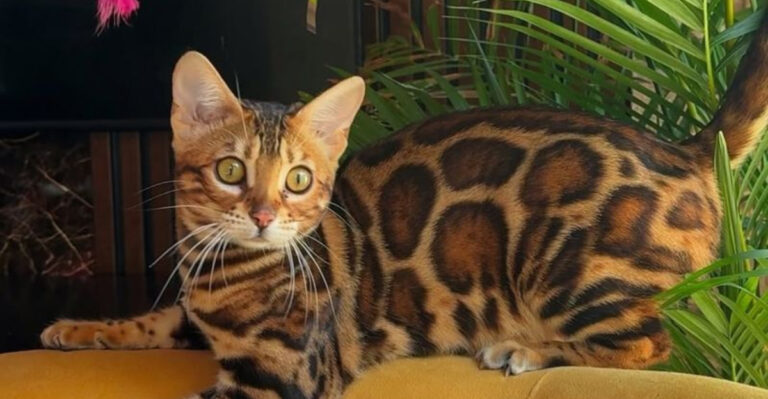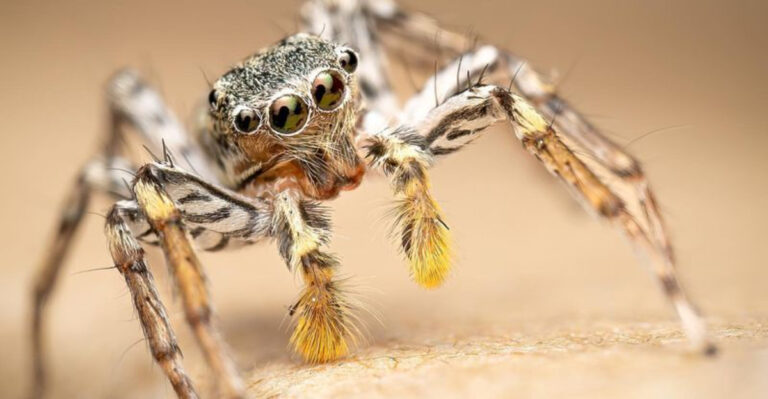16 Amazing Facts About The Soundless Flight Of The Great Horned Owl
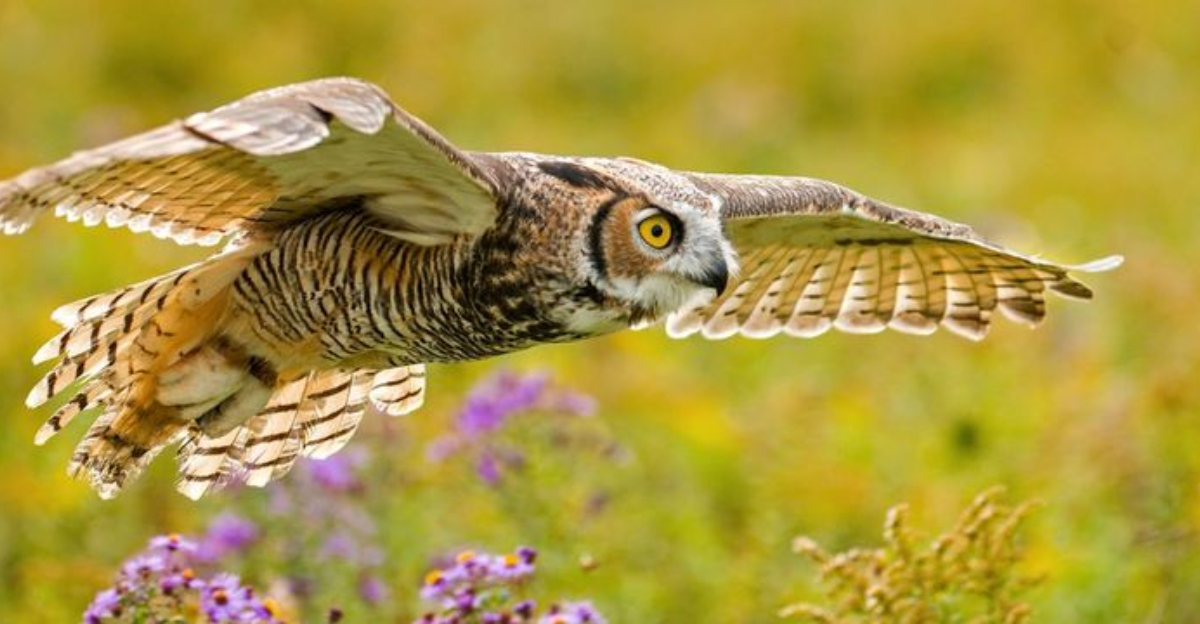
Who knew that a creature of the night could be such a master of stealth?
The Great Horned Owl, with its wide-eyed stare and majestic wingspan, isn’t just another bird of prey; it’s an aviator with a secret superpower – silent flight.
Known for its eerie ability to glide through the air without a whisper, the Great Horned Owl leaves both its prey and admirers in awe.
1. The Owl’s Quiet Tailwinds
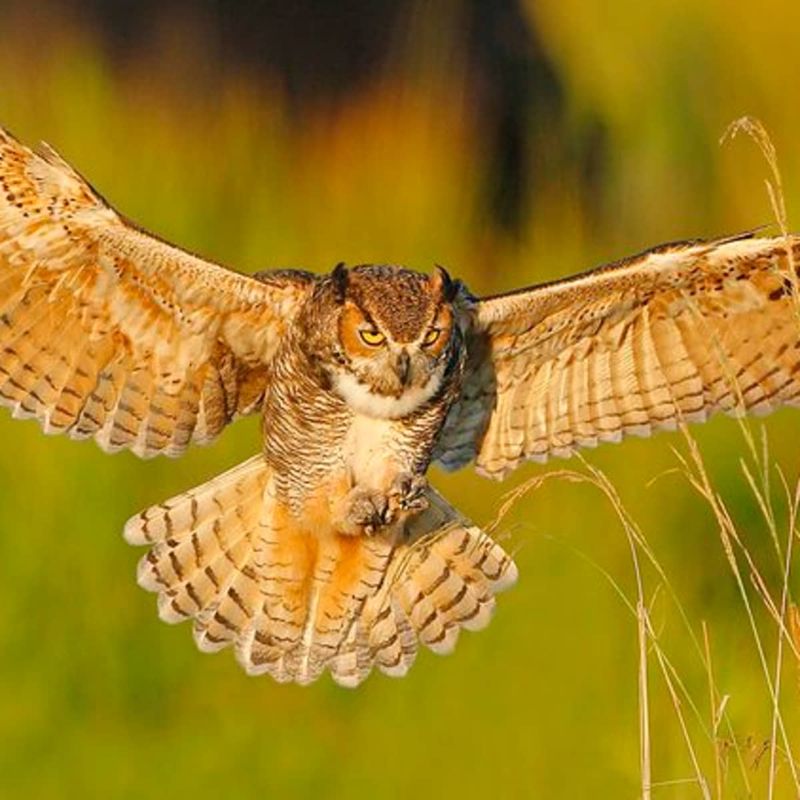
While the wings of the Great Horned Owl often steal the spotlight, its tail plays an equally crucial role in maintaining silence. The tail feathers are broad and soft, acting as a stabilizer and sound dampener.
As the owl maneuvers through the air, the tail aids in reducing turbulence, complementing the silent flight.
This feature ensures that the owl remains a ghostly presence in the air, with tailwinds that whisper rather than roar.
2. Feathers Designed For Silence

The secret to the owl’s stealth lies in its feathers. Soft edges and a velvety texture reduce noise, allowing it to swoop down silently on prey.
Unlike other birds, the Great Horned Owl’s flight feathers have serrated edges, breaking up turbulence and muffling sound.
This design helps in catching prey by surprise, making the owl a fearsome hunter. Additionally, the soft down feathers beneath provide insulation and further noise reduction, perfect for its nocturnal lifestyle.
3. Wing Shape Magic
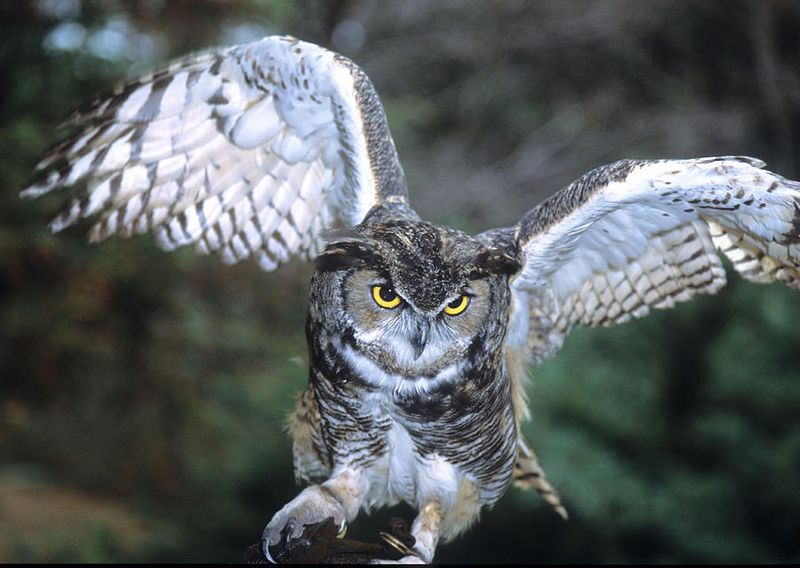
Why does an owl seem to glide effortlessly? Its wings hold the answer! The Great Horned Owl has broad, rounded wings that provide incredible lift and maneuverability.
These wings allow it to fly slowly without stalling, ideal for sneaking up on prey. The broader wings also mean fewer wingbeats, which means less noise.
This adaptation is vital for its hunting success, enabling it to be a ghostly presence in the dark skies. With such finely tuned wings, the owl is nature’s stealthy glider.
4. The Science Of Silent Flights

Ever wonder how an owl achieves such quiet flight? It’s all about aerodynamics! The Great Horned Owl’s wing structure is designed to minimize noise by smoothing airflow.
This allows for a stealthy approach, undetectable by prey. The leading edges of the wings are comb-like, breaking up the air turbulence that typically creates sound.
This aerodynamic marvel not only aids in hunting but also showcases an evolutionary advantage. Through the science of flight, the owl remains nature’s silent hunter.
5. Ears Attuned To The Night
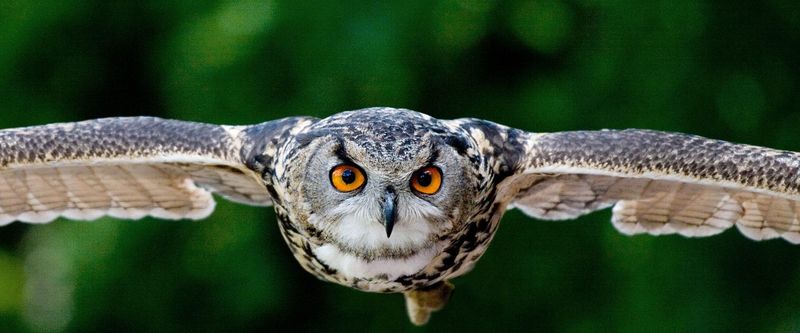
Not just any bird can hear a mouse under the snow. The Great Horned Owl’s ears are asymmetrically placed, allowing it to pinpoint sounds with astonishing accuracy.
This unique adaptation means it doesn’t rely solely on sight to hunt. Even in complete darkness, it can detect prey through sound alone.
With such impressive auditory skills, the owl can focus entirely on silent flight, making its hunting technique nearly flawless.
6. Eyes Built For The Night
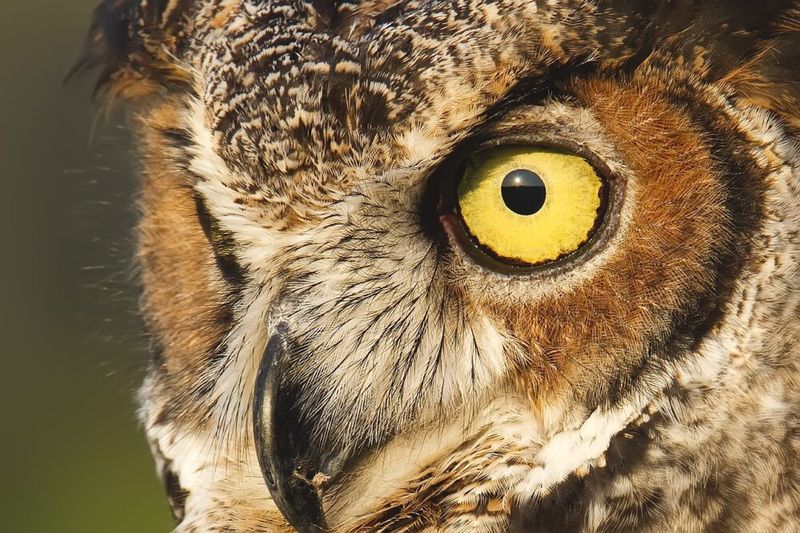
Ever felt like you’re being watched in the dark? Those are likely the Great Horned Owl’s mesmerizing eyes. They are not only large but also uniquely adapted for night vision.
With more rod cells than cones, these eyes can see in low light conditions, perfect for nocturnal hunting. This visual prowess complements its silent flight, allowing it to track and capture prey efficiently.
The eyes appear almost luminous, offering an eerie advantage in the dark. With such evolutionary traits, the owl remains king of the night skies.
7. Stealth Mode: Engaged!

Why don’t you see owls more often? Their stealth isn’t just in flight; it’s in their lifestyle. The Great Horned Owl’s plumage is perfectly camouflaged against tree bark, making it nearly invisible when perched.
This disguise is vital for avoiding detection by both prey and predators. The owl’s silent presence is an evolutionary adaptation that keeps it safe and successful in its environment.
8. Quiet Landing Gear
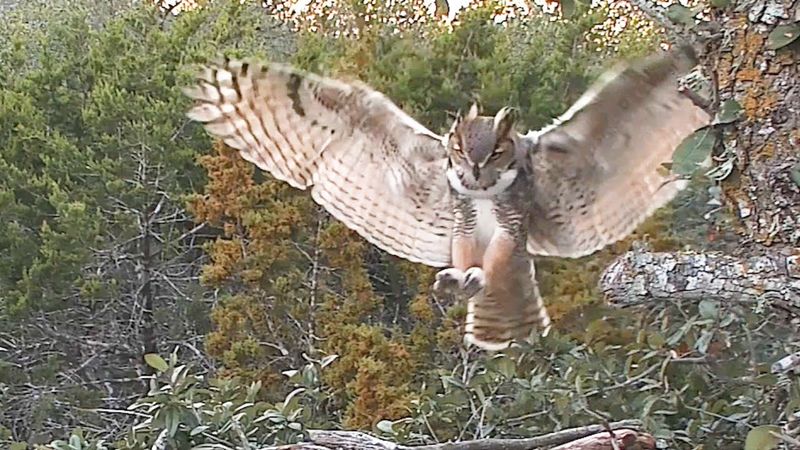
Imagine a predator that can land without making a sound. The Great Horned Owl’s legs and talons are as silent as its wings. Equipped with soft pads on its feet, it can land quietly on any surface.
This ability ensures that its approach remains undetected until the last moment. The owl’s landing technique is an extension of its silent flight, perfected by nature for effective hunting.
The soft, stealthy landing is one more reason the Great Horned Owl is a master of the skies.
9. A Feathered Night Cloak

The Great Horned Owl doesn’t just fly quietly; it embraces the night with its cloak of feathers. These feathers are not only silent but also adapted for darkness, absorbing minimal light.
This makes the owl nearly invisible during its nocturnal hunts. The dark, mottled plumage provides excellent camouflage against the night sky and forest backdrop.
The owl’s feathered cloak is a marvel of evolution, ensuring that it remains undetectable even in plain sight. Such mastery of disguise is what makes this owl truly incredible.
10. Silent Predator Of The Skies
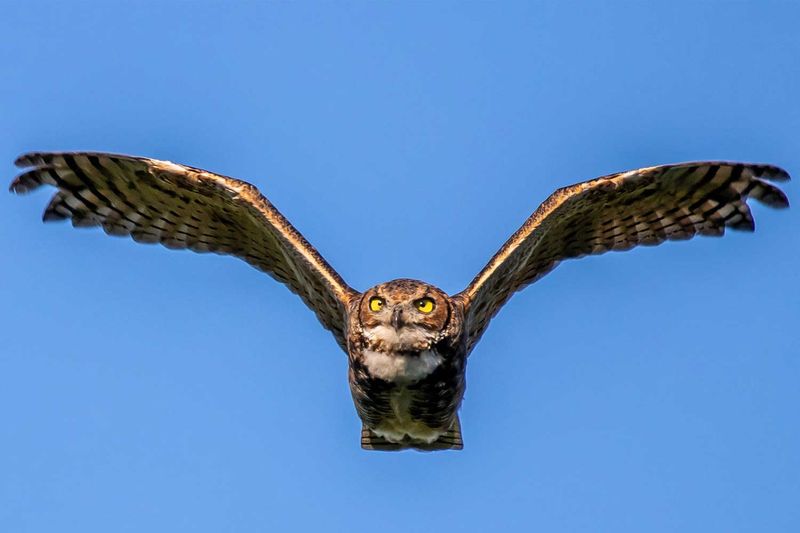
You wouldn’t hear it coming – literally! The Great Horned Owl is the silent predator of the nocturnal world. Its entire physiology is tailored for hushed hunting.
From specialized feathers to stealthy body movements, every aspect of its being minimizes noise. This silence isn’t just for hunting; it’s essential for survival in the wild.
By being undetectable, the owl avoids threats and secures its prey efficiently. The silence of the Great Horned Owl is a perfect example of nature’s ingenuity at work.
11. Feathered Echo Absorbers

In the quiet of the night, the Great Horned Owl glides effortlessly, its feathers uniquely adapted to absorb sound. The trailing edges of its feathers are fringed, resembling a soft comb, which disrupts the airflow.
This design minimizes noise, allowing the owl to swoop down on its prey undetected. Their plush, velvety down further dampens sound, creating a soundproof barrier.
These feathered adaptations not only muffle sound but also enable the owl to detect the faintest rustle of prey below.
12. The Art Of Ambush
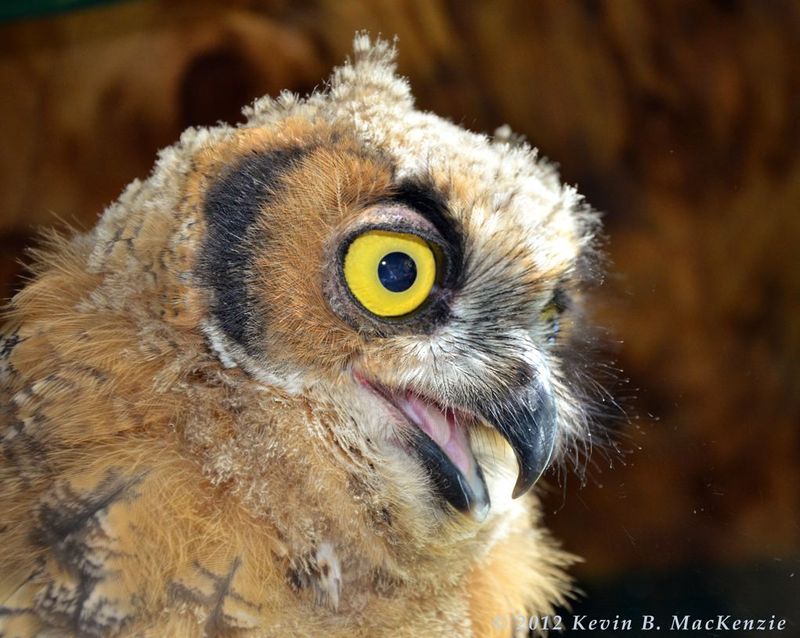
Think you could evade an owl? Think again! The Great Horned Owl is an expert ambusher. By combining silent flight with acute senses, it can strike before prey realizes it’s there.
This ambush technique is enhanced by its ability to fly low and quietly. The owl’s approach is so stealthy that it often catches prey off guard, securing a meal with precision.
Such mastery in hunting reflects its adaptation and survival tactics. It’s like nature’s own ninja in feathered form.
13. Communication Without Sound
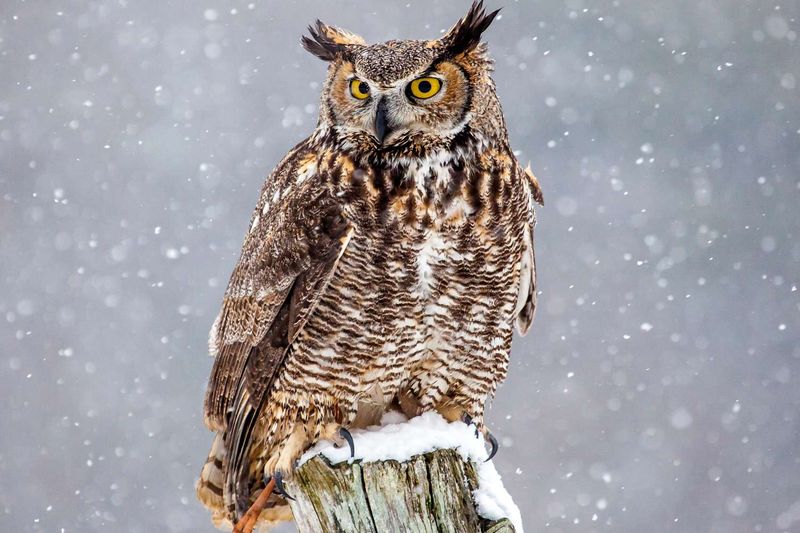
How does an owl communicate silently? The Great Horned Owl uses body language and posturing to convey messages. Its tufts, often mistaken for ears, are actually used in signaling to other owls.
Whether it’s a warning or attracting a mate, this unspoken language is crucial. This silent communication complements its quiet flight, ensuring that its presence remains a mystery to others.
Such non-verbal cues demonstrate the owl’s complex social interactions without uttering a sound. Truly, this bird is a maestro of silent expression.
14. Silent But Deadly

The term “silent but deadly” fits the Great Horned Owl perfectly. This nocturnal hunter relies on its soundless wings and sharp talons to capture prey with lethal efficiency.
Its hunting technique involves stealthy approaches and swift strikes, leaving little chance for escape. This deadly precision is honed by its evolutionary adaptations, ensuring success in its role as a top predator.
The combination of silence and lethal prowess makes this owl a formidable force in the animal kingdom. Nature truly crafted a perfect hunter.
15. Nature’s Soundless Flyer

Gliding silently under the moon, the Great Horned Owl is nature’s quiet aviator. With every wingbeat designed for stealth, it moves through the night like a whisper.
This silent flight isn’t just for hunting; it’s a spectacle of evolution’s artistry. The owl’s presence is only revealed by the occasional hoot or the rustle of leaves it passes by.
It’s a reminder of the beauty and mystery of nature’s creations. Watching it soar is like witnessing a ghostly ballet in the sky.
16. The Mystery Of Silent Wings
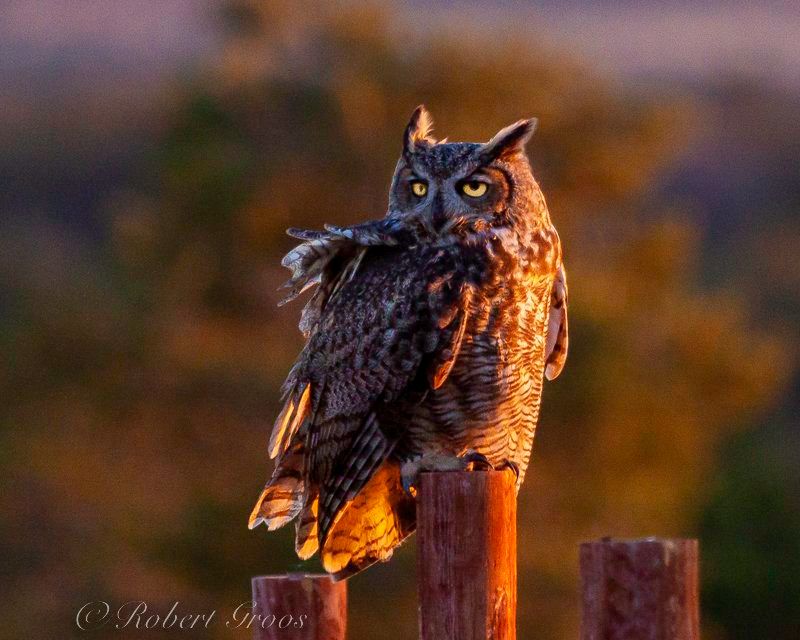
What makes the Great Horned Owl’s wings so mysterious? They’re built for silence, with each feather playing a role in noise reduction.
The fringed edges and soft texture help break up air currents, allowing it to fly with minimal sound. This mystery of silent wings is a product of evolution, tailored for nighttime hunting.
The owl’s wings are a testament to how nature adapts for survival.

